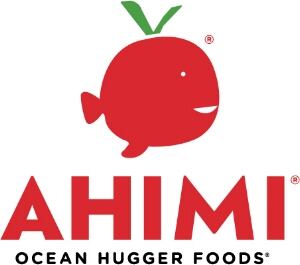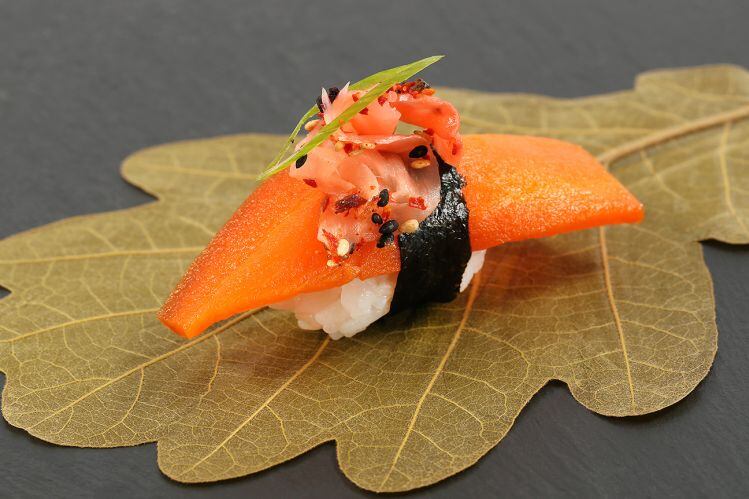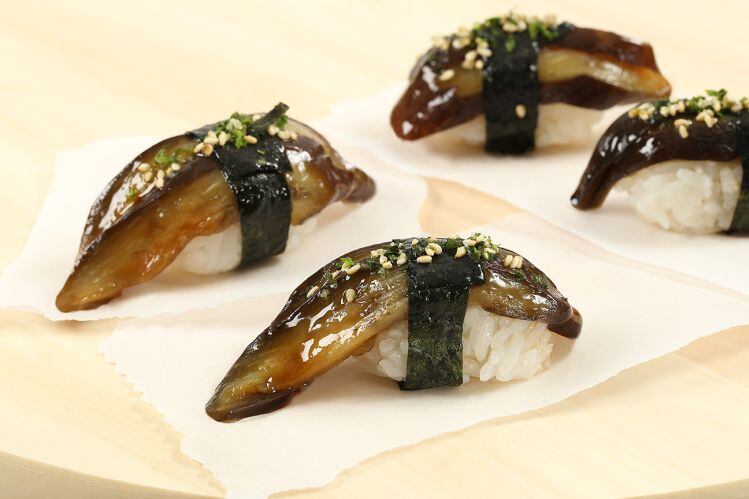The brainchild of certified master chef James Corwell - who had a Eureka moment while visiting the Tsukiji fish market in Tokyo (he saw two football-field sized warehouses full of endangered yellow fin and blue fin tuna sold in one morning and realized “the oceans could never keep up”) - New York-based Ocean Hugger Foods occupies a distinct niche in the burgeoning meat/seafood alternatives space.
While most formulators combine textured soy, pea, or wheat protein with oils, gums, starches and flavors, Corwell started with veggies: Roma tomatoes (Ahimi raw ‘tuna’), carrots (Sakimi ‘salmon’), and eggplants (Unami ‘eel’) which headline a short, clean ingredients list, rather than fixating on protein.
We’ve created a firmer texture that mimics the experience of biting into raw fish
His first product – Ahimi (ideal for sushi, poke, wraps, bowls and salads) - is made from fresh Roma tomatoes, non-GMO soy sauce, filtered water, sugar and sesame oil, and tastes uncannily like raw tuna, CEO David Benzaquen told FoodNavigator-USA.
“This is not an extruded protein isolate; we start with fresh Roma tomatoes. There’s a complex mechanical proprietary process we use with all our vegetables to eliminate the flavor – the acidity in tomatoes, the sweetness of carrots and the bitterness of the eggplant - and create a firmer texture that mimics the experience of biting into raw fish, and from there we can layer on any flavor we want. We sell it frozen and chefs can thaw and cut it the same way they would raw fish."
Asked about IP, he said: “It’s a trade secret, but we intend to patent it, so I can’t go into any more detail, but none of the other products I’ve tried - things like watermelon poke – come anywhere close to what James has created.”
In November 2017 we launched with our first customer: Whole Foods
The route to market is multi-pronged right now, with promising avenues to pursue in the foodservice and retail foodservice markets (eg. supermarket deli/sushi counters), added Benzaquen, with all partners agreeing to brand the products on site (the Ahimi ‘tuna’ has a tomato-fish logo, for example).

“We spent a couple of years raising capital, developing the branding and getting the recipe from something that you could make in your kitchen to something that would work on a commercial scale, and in November 2017 we launched with our first customer: Whole Foods, which stocks Ahimi in its sushi bars.”
And ever since, things have been kind of crazy, added Benzaquen, who founded a brand management and marketing agency for plant-based CPG companies called PlantBased Solutions back in 2012.
“We have deals with some very large distributors to sell our products all over the world. We have signed deals to expand into thousands of locations, but it will take time.
“Nishimoto Trading Company – which is a strategic partner and investor - operates in the US and Canada as Wismettac Asian Foods, and in the UK as Harro Foods, and they have agreed to distribute us globally, which is really exciting. We’re also in conversations with retailers and restaurant chains all over the world, so the focus now is on investing heavily to expand production capacity so we can meet this demand. We’re using a contract manufacturer but we manage the process at their facility.”
Other deals with foodservice giant Aramark (which says 30% of main dishes served across its dining operations in healthcare, higher education and business dining are now vegetarian or vegan) and Bon Appétit Management Company (whose corporate clients include Google), are also introducing Ahimi to office workers and college students across the country, he said.
"Our products are also attractive from a cost perspective [tomatoes and carrots are significantly cheaper than tuna and salmon] and restaurants can make significant cost savings and show their commitment to sustainability and innovation."

Why might consumers buy plant-based seafood?
But does the fact that Ocean Hugger Foods is building its products from vegetables, rather than protein-packed pulses, grains or seeds, matter? Should plant-based seafood try to match the nutrition, as well as the texture and appearance, of the real thing?
It depends what you’re looking for, and why you’re buying these products in the first place, said Benzaquen, who notes that when it comes to seafood in particular, consumers are highly attuned to sustainability issues, and are looking for products – whether marine-based or plant-based – that can deliver on this front.
“Fish is a healthy food for sure, but there are major problems with how it’s being sourced and farmed, from over-fishing to all the bycatch and potential contaminants.”
As for protein, a macronutrient most Americans are not short of, not every plant-based product has to deliver a boatload of it to appeal to consumers, who are first and foremost looking for tasty, healthy products that don’t harm animals or the planet, he added.
“You also don’t get the mercury toxins and the allergen issues with plant-based seafood. Products we’ll launch in the future will also include omega-3 DHA from algae oil, so they will be a source of healthy fats, although they won’t be a good source of protein.”

Branding in the plant-based seafood arena
So how do you brand and market plant-based seafood?
“In terms of the mission piece around health, sustainability and animal welfare, I’d say sustainability is #1," said Benzaquen. "You don’t have to be on some kind of ideological mission to acknowledge that endangered species should be protected and we need to protect our oceans from overfishing.”
That said, if the products don’t taste great, and the brand isn’t fun and engaging, the mission ultimately doesn’t matter, because no one will eat them, he said.
“The mission is why we exist, but this is a chef-created product and it’s essential that our products are of exceptional quality and taste incredible.”
The plant-based seafood market is heating up, with players including New Wave Foods, Good Catch, Sophie’s Kitchen, Terramino Foods, Gardein, May Wah and VegeUSA all developing new offerings in this market.
